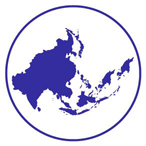Presentation Title
Recreating Traditional Japan in Brinkley's Japan, Described and Illustrated by the Japanese
Location
RCC Demo Room
Start Date
12-10-2013 11:00 AM
End Date
12-10-2013 12:30 PM
Abstract
In 1897-98, Francis Brinkley edited the ten volume set Japan, Described and Illustrated by the Japanese, Written by Eminent Japanese Authorities and Scholars. Brinkley (1841-1912) was an Irish sea captain who resided in Japan for over forty years, spoke and wrote fluent Japanese, was the editor of Japan Mail, an influential English-language newspaper. Published by J. B. Millet Company in Boston and Tokyo, the books were produced for the American and European markets and were a great financial success.
Published in several sizes, from cheap editions illustrated with black and white reproductions to folio sized editions bound in silk and embellished with hand colored albumin photographs, collotypes, and woodblocks. It is uncertain who wrote the text, but some of the images are attributed to Kazumasa Ogawa, a pioneer Japanese photographer.
In my paper, I will argue that these volumes reinforced the superficial romantic views about Japan that many westerners held. To substantiate this claim, I will juxtapose images produced by Brinkley with those created at the same time by Japanese artists for domestic audiences. In my analysis, I will extrapolate Said’s Orientalism to the case of Japan and will discuss its Eurocentric portrayal in Brinkley’s volumes. I will argue that while being esthetically pleasing, Brinkley’s books cashed in on the Japan craze and promoted the notion that non-western societies still existed in pre-modern conditions.
Recreating Traditional Japan in Brinkley's Japan, Described and Illustrated by the Japanese
RCC Demo Room
In 1897-98, Francis Brinkley edited the ten volume set Japan, Described and Illustrated by the Japanese, Written by Eminent Japanese Authorities and Scholars. Brinkley (1841-1912) was an Irish sea captain who resided in Japan for over forty years, spoke and wrote fluent Japanese, was the editor of Japan Mail, an influential English-language newspaper. Published by J. B. Millet Company in Boston and Tokyo, the books were produced for the American and European markets and were a great financial success.
Published in several sizes, from cheap editions illustrated with black and white reproductions to folio sized editions bound in silk and embellished with hand colored albumin photographs, collotypes, and woodblocks. It is uncertain who wrote the text, but some of the images are attributed to Kazumasa Ogawa, a pioneer Japanese photographer.
In my paper, I will argue that these volumes reinforced the superficial romantic views about Japan that many westerners held. To substantiate this claim, I will juxtapose images produced by Brinkley with those created at the same time by Japanese artists for domestic audiences. In my analysis, I will extrapolate Said’s Orientalism to the case of Japan and will discuss its Eurocentric portrayal in Brinkley’s volumes. I will argue that while being esthetically pleasing, Brinkley’s books cashed in on the Japan craze and promoted the notion that non-western societies still existed in pre-modern conditions.

Comments
Presentation is included in Panel 15: Collecting Culture and National Identity in Asian Art